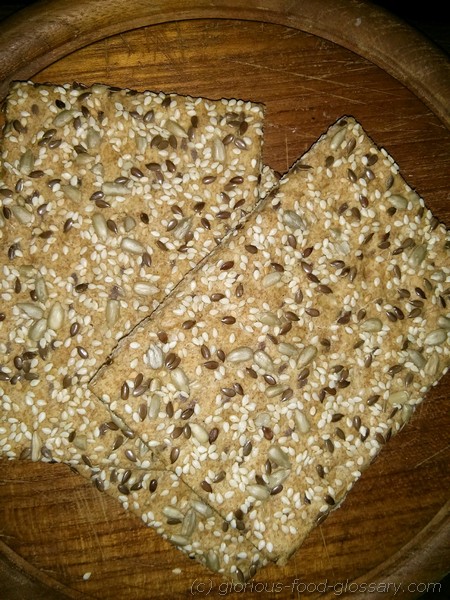The Glorious Food Glossary
The Glorious Food Glossary tells you everything important about the world of food. The Food Glosssary is all about different kinds of food from all over the world and how they are prepared and what their main ingredients are.
Moreover, the glossary is all about what people all over the world are eating and drinking and their activities, festivities, marriages, etc that involves food.
This Food Glossary is all about food . . . glorious food. We tell you about the food, some stories about them and we try our best to make photos of them as we travel around the world. As of now, we are featuring extensively foods from Germany, the Philippines and the State of Kerala, India, but we will add more pictures for you to enjoy as we discover the food of the world... as we travel around the globe.
All articles are available through the search function or via the A to Z line at the top of every page.
Knäcke (Knaecke)
Knäcke (Knaecke) also called Knäckebrot (Knaeckebrot) refers to crisp or crispy bread. In Germany, they can be bought in plastic packs with at least 6 pieces plain or with assorted nuts, like white and black sesame seeds, poppy seeds, pine nuts or pumpkin nuts or mixed nuts, like the one in the picture below.

Barbecuing
Deutsch: Grillen / Español: Barbacoa / Português: Churrasco / Français: Barbecue / Italiano: Barbecue
Barbecuing in the food context refers to a cooking method that involves slow-cooking food, typically meat, over low, indirect heat, often with the use of smoke to impart a distinctive flavour. This process is distinct from grilling, which uses higher, direct heat for faster cooking. Barbecuing is associated with various regional styles and traditions, particularly in the Southern United States, South America, and parts of Asia.
Contadina
Deutsch: Contadina / Español: Contadina / Português: Contadina / Français: Contadina / Italiano: Contadina
Contadina is an Italian term meaning "peasant" or "country style," used in the food context to describe rustic, simple dishes that are made with fresh, seasonal ingredients typical of rural, traditional Italian cooking. The term evokes the essence of hearty, wholesome dishes that are both flavourful and comforting, often based on local produce, grains, and basic pantry items.
Thakkali
English: Tomato
Thakkali, a term derived from the South Indian language of Tamil, refers to one of the world's most widely used and versatile fruits—the tomato. This article delves into the definition, culinary significance, popular uses, and a simple recipe featuring Thakkali. Additionally, we'll explore the history and legal aspects of tomatoes and list some similar ingredients and dishes.Mangan
Deutsch: Mangan / Español: Manganeso / Português: Manganês / Français: Manganèse / Italiano: Manganese
Mangan is an essential trace mineral that plays a crucial role in various biological processes, particularly in the context of food and nutrition. It is involved in the metabolism of carbohydrates, proteins, and cholesterol, as well as in the formation of connective tissues and bones. The human body requires manganese for optimal functioning, and it is found in a variety of foods, including nuts, seeds, whole grains, and leafy vegetables.
